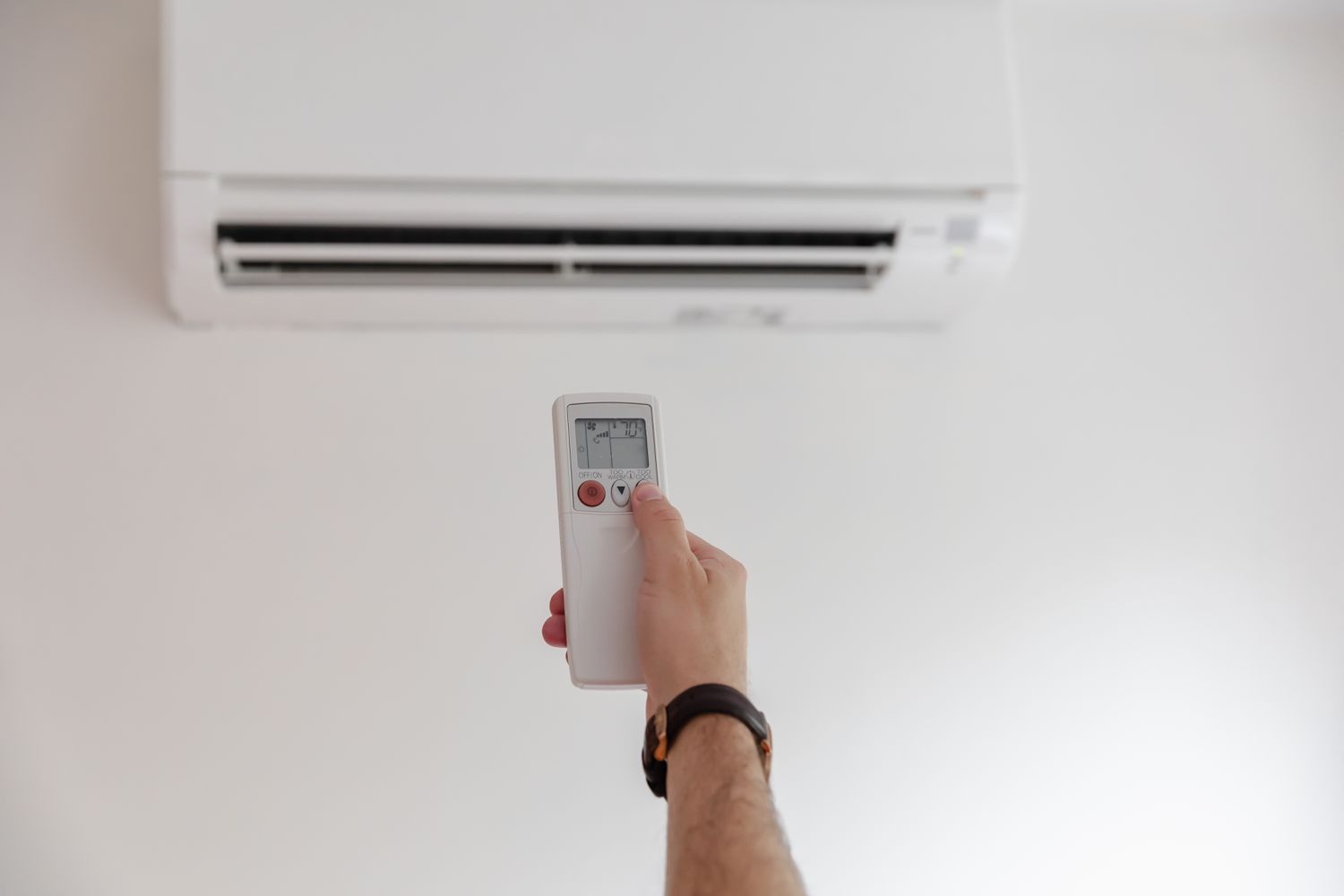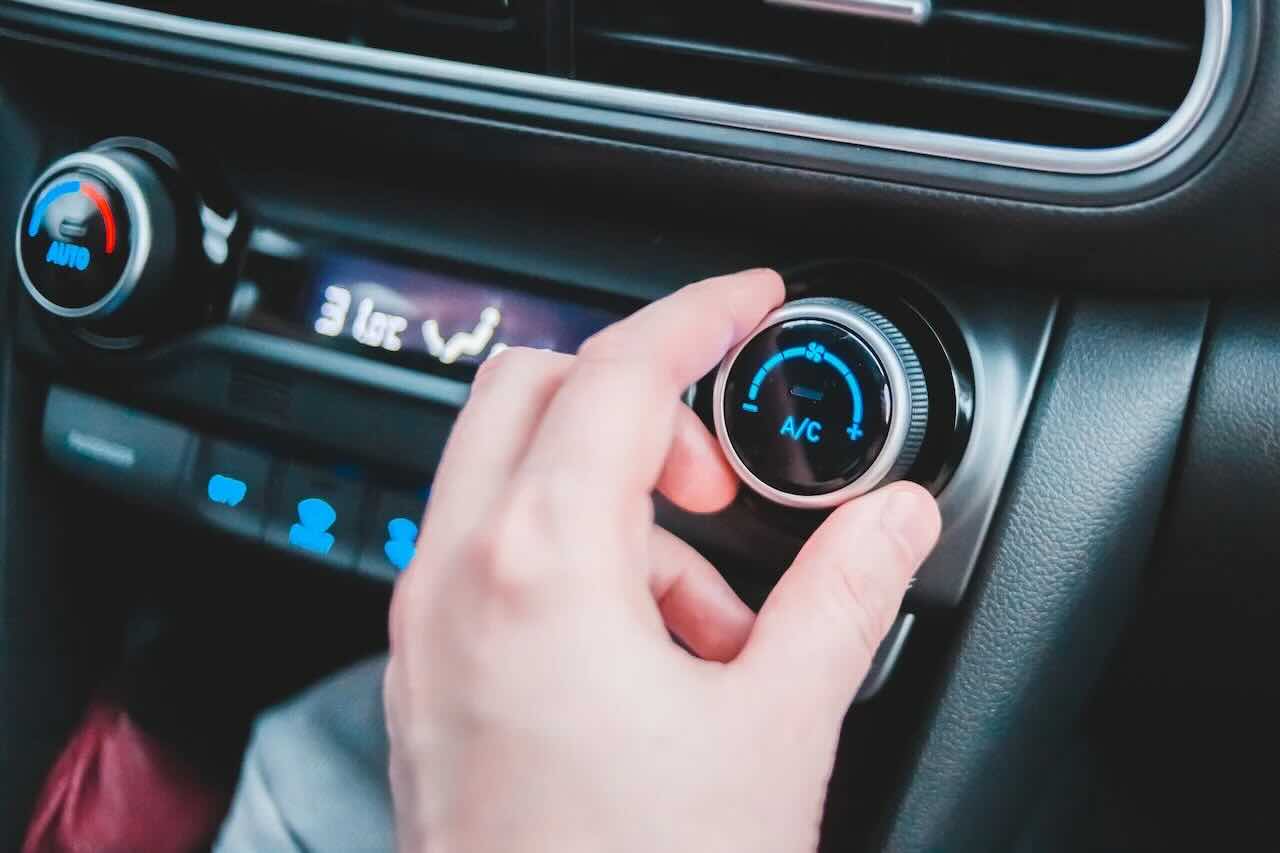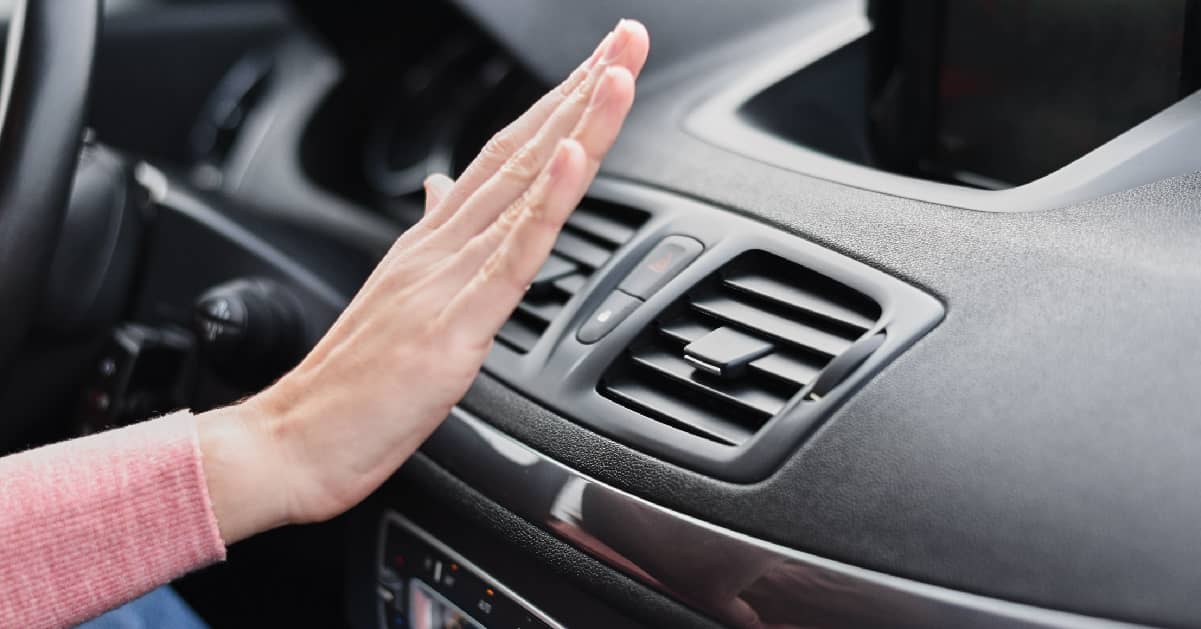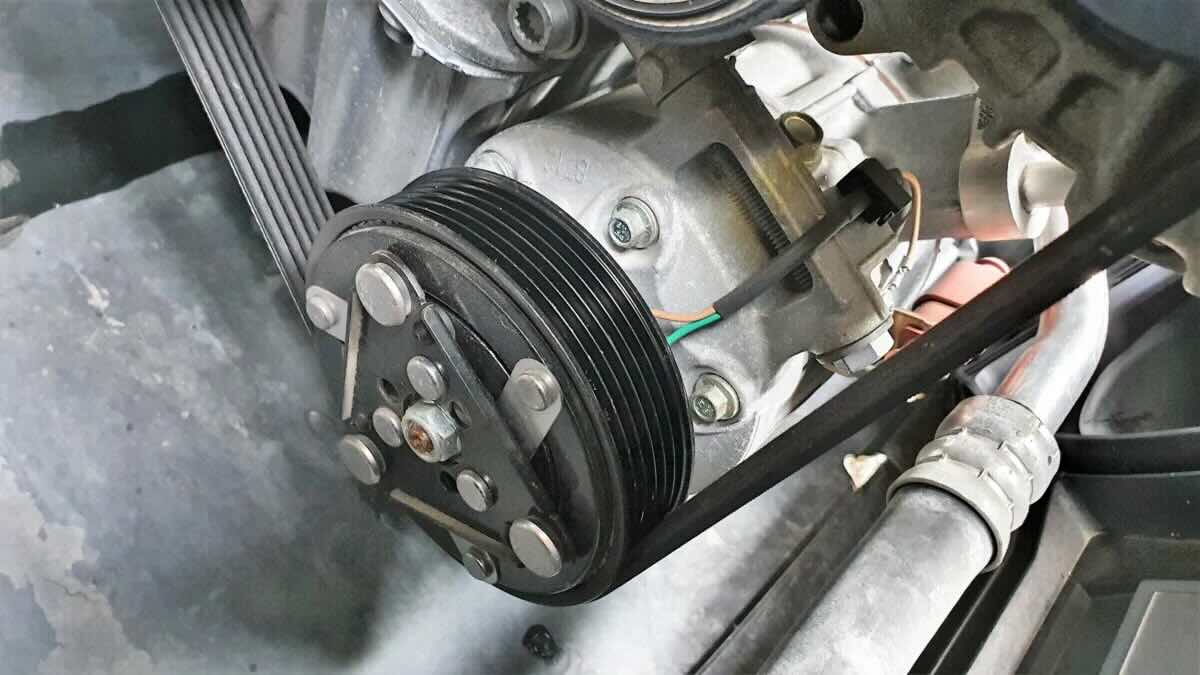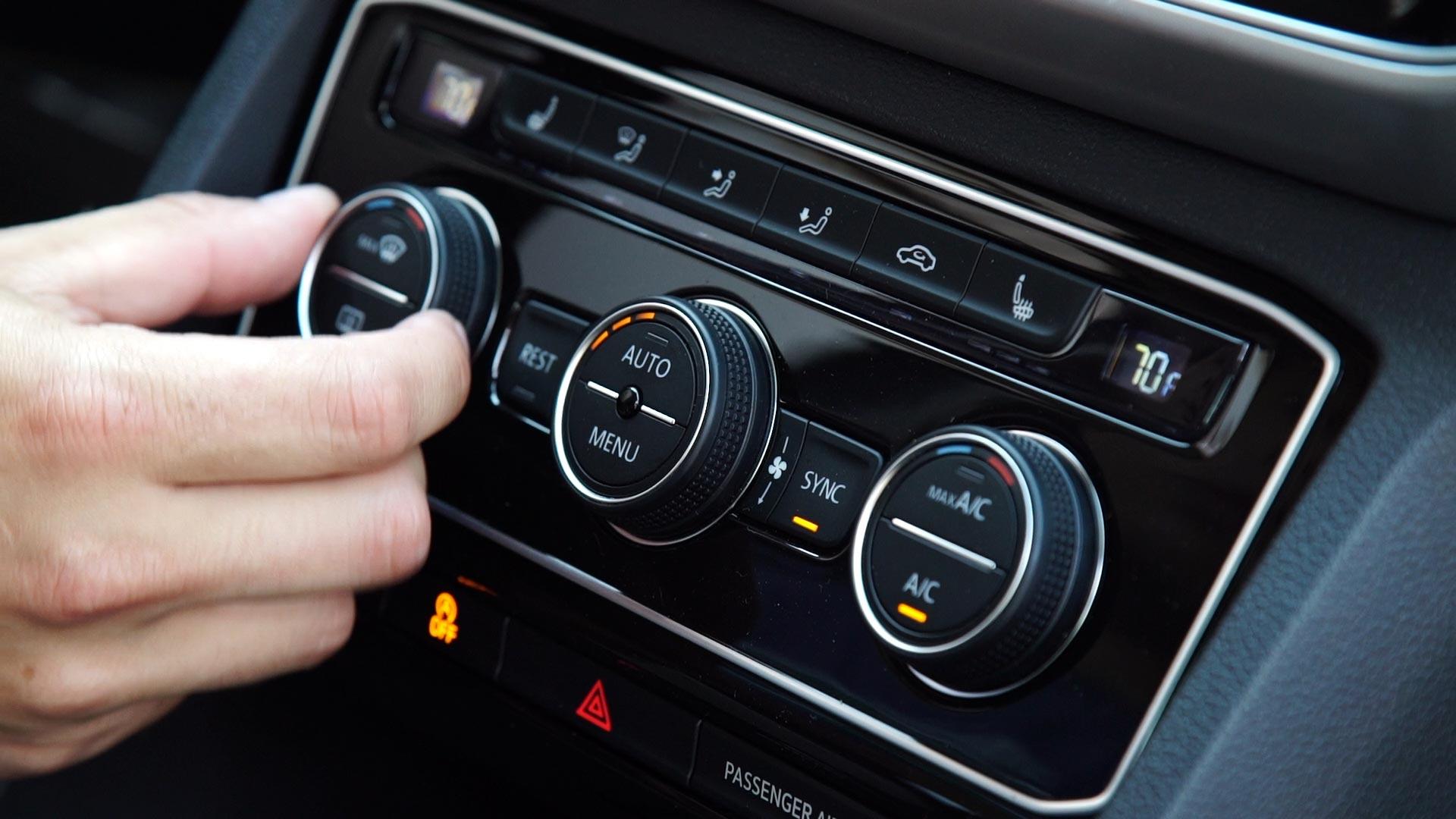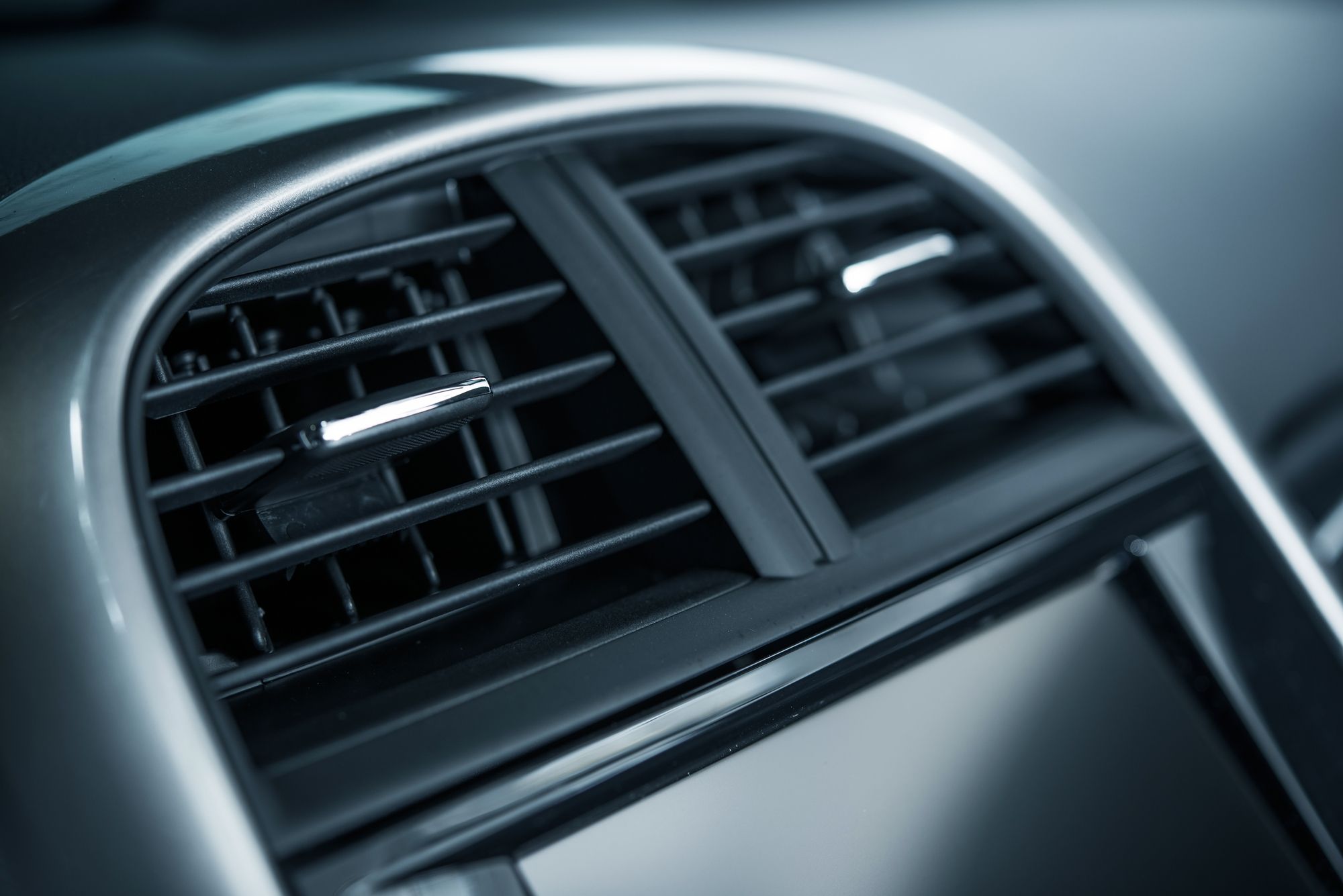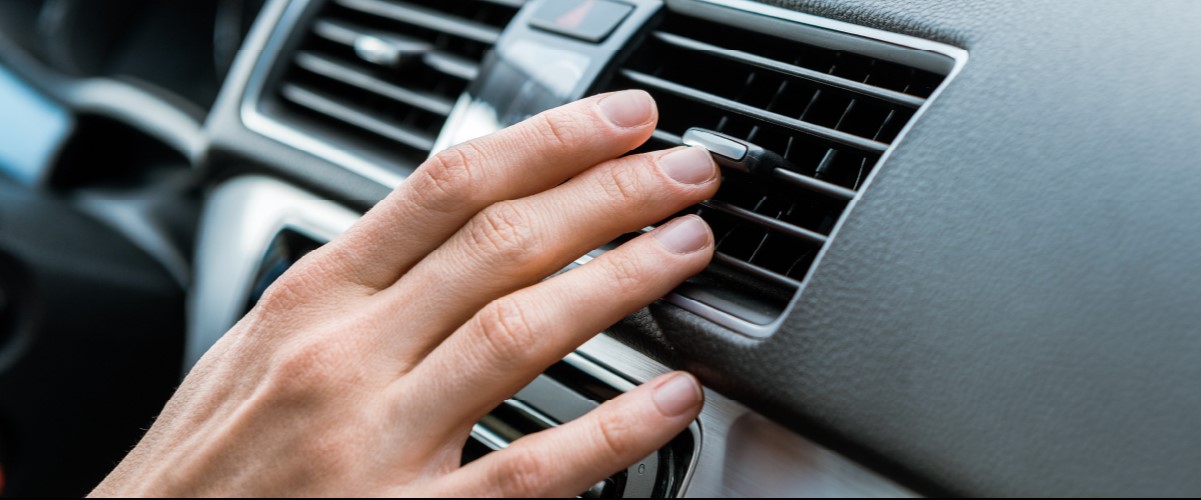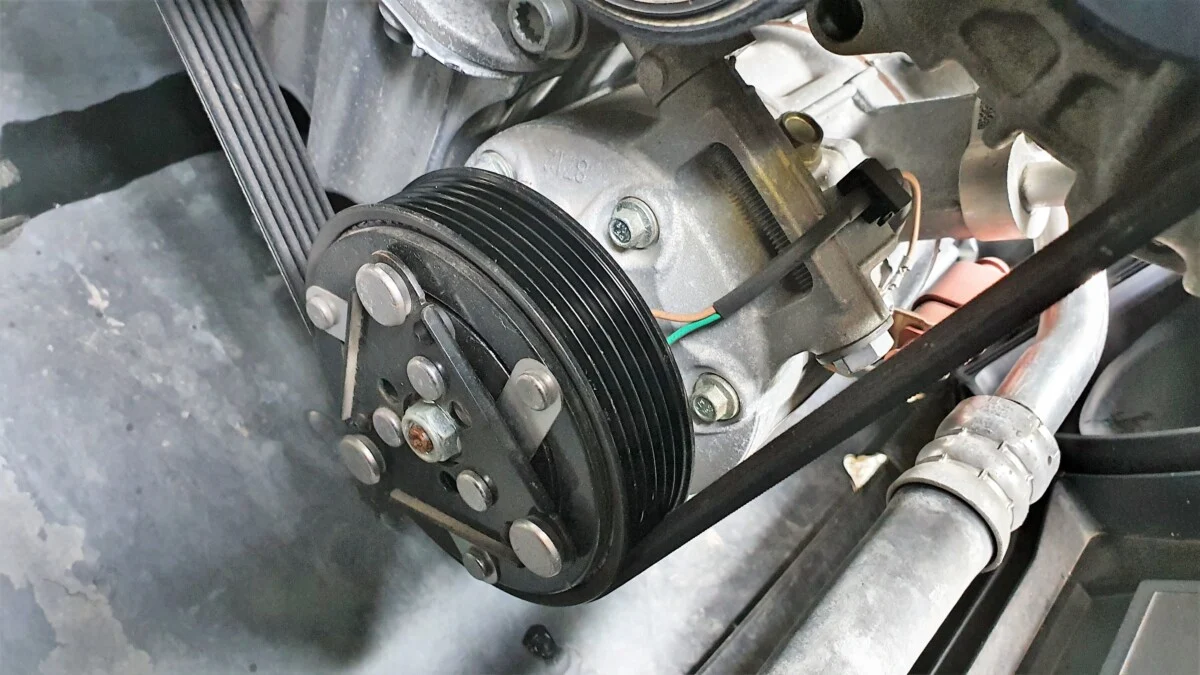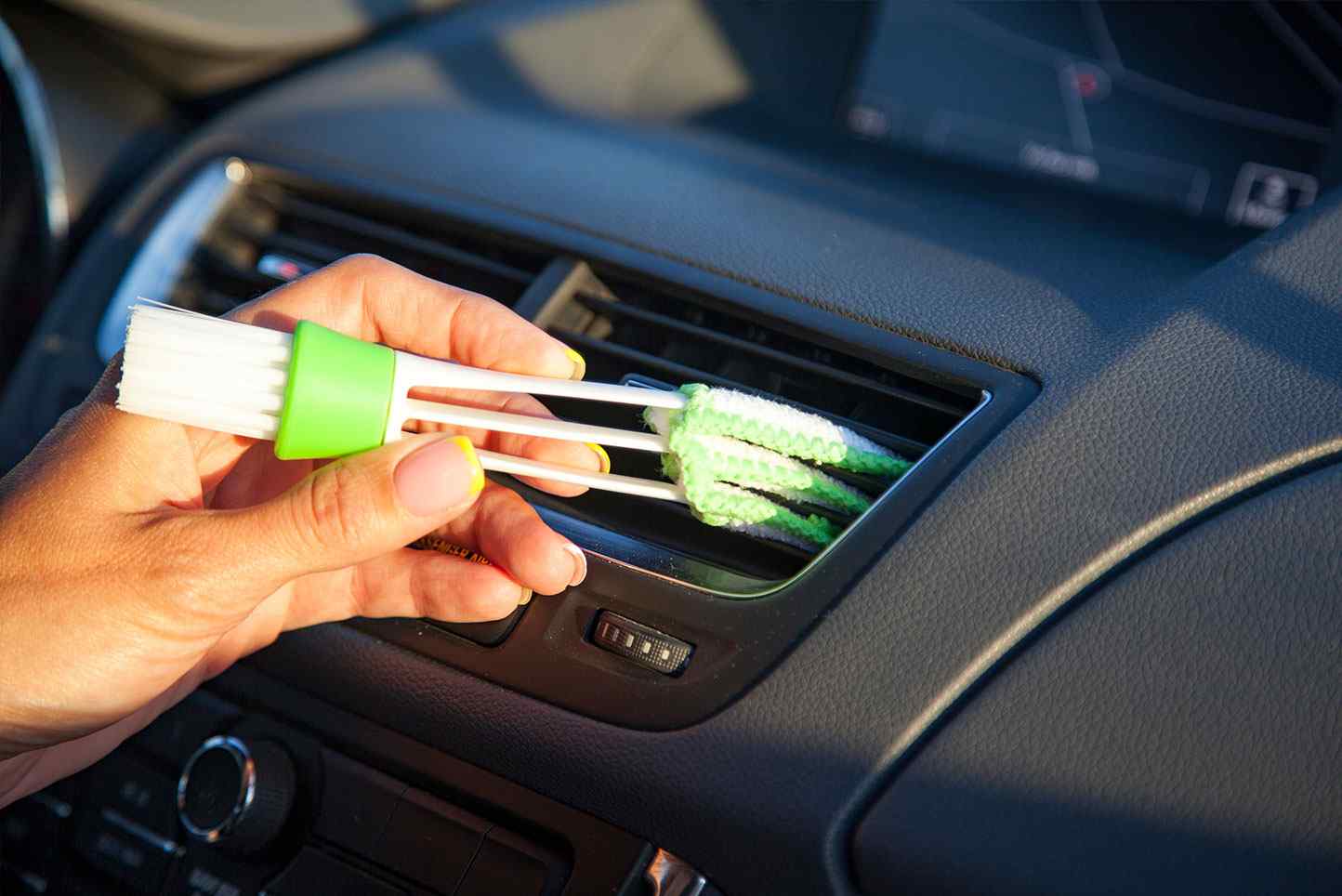Home>Home Maintenance>Why Does The Air Conditioner Only Work When The Car Is Moving
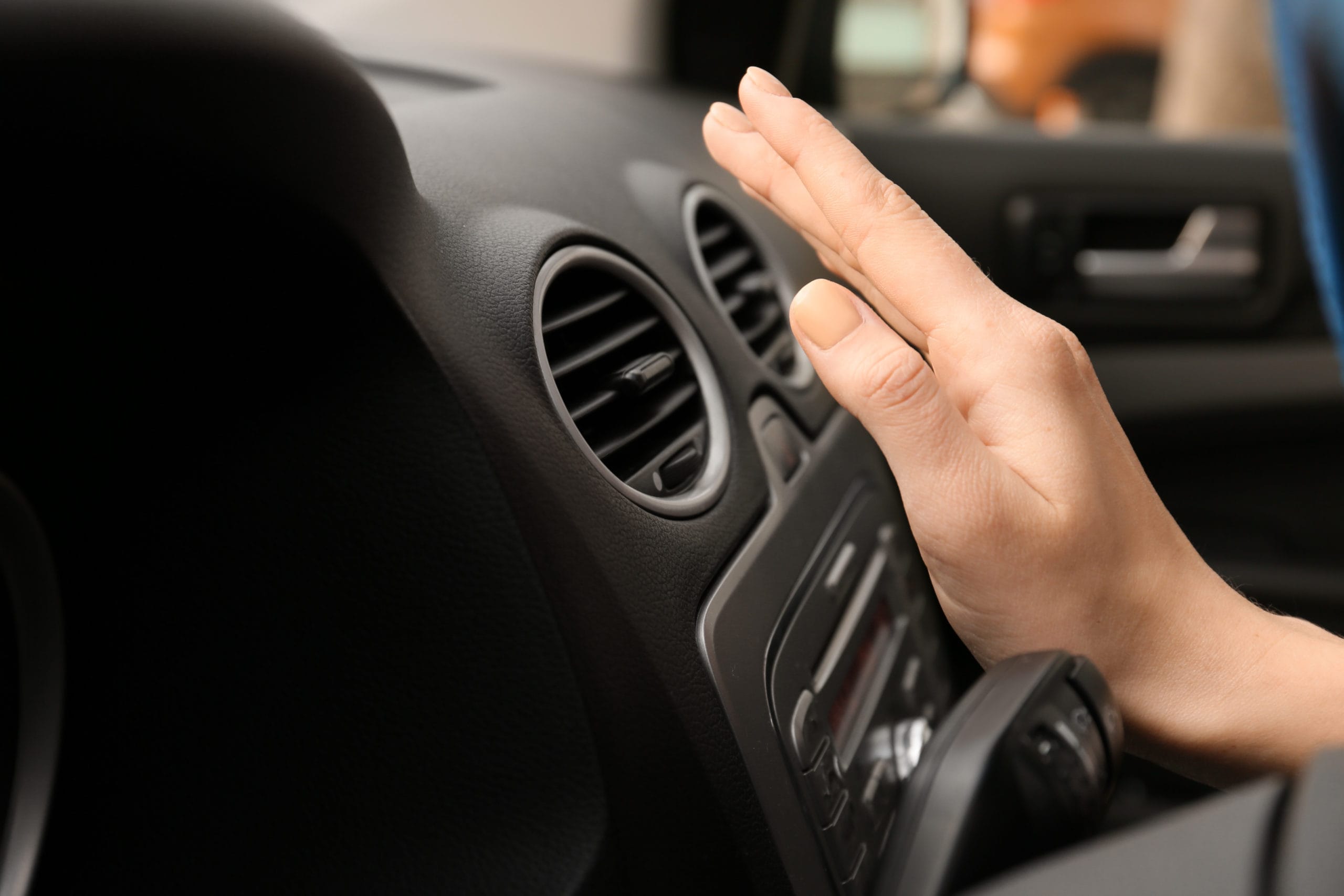

Home Maintenance
Why Does The Air Conditioner Only Work When The Car Is Moving
Modified: March 7, 2024
Ensure Proper Home Maintenance with Our Expert Tips! Learn how to troubleshoot and fix your car's air conditioning system, which only works when the vehicle is in motion.
(Many of the links in this article redirect to a specific reviewed product. Your purchase of these products through affiliate links helps to generate commission for Storables.com, at no extra cost. Learn more)
Introduction
Welcome to the world of home maintenance, where taking care of your living space is not only a necessary task but also a rewarding one. As homeowners, it’s important to stay on top of regular maintenance tasks to ensure that our homes stay in good condition and provide a safe and comfortable environment for our families. One area of home maintenance that often requires attention is the air conditioner. An air conditioner that only works when the car is moving can be a frustrating and puzzling problem to deal with.
In this article, we will explore the signs that your air conditioner is only functioning when your car is in motion. We will also delve into the possible causes behind this issue and provide practical tips on how to diagnose and fix the problem. So, whether you’re dealing with this problem for the first time or looking to expand your home maintenance knowledge, let’s dive in and find solutions to keep your air conditioner running smoothly.
Key Takeaways:
- Keep your car’s air conditioner running smoothly by checking for signs like lack of cool air at idle, intermittent operation, strange noises, decreased airflow, and increased engine temperature.
- Regular maintenance, including checking the compressor, inspecting the refrigerant level, testing for electrical problems, and cleaning or replacing the air filter, can prevent issues and maintain the efficiency of your air conditioning system.
Read more: Why Does My Car Air Conditioner Smell
Signs of an Air Conditioner Only Working When the Car Is Moving
When your car’s air conditioner only functions properly when the vehicle is in motion, it can be quite frustrating, especially during hot summer months. Here are some common signs that indicate your air conditioner is experiencing this issue:
- Lack of Cool Air at Idle: One of the most obvious signs is the absence of cool air when the car is stationary. You might notice that the air conditioner works perfectly fine as long as the vehicle is in motion, but as soon as you stop at a red light or in heavy traffic, the cool air stops blowing.
- Intermittent Operation: Another sign is when the air conditioner operates on and off while the car is stationary. It might work for a short period, and then suddenly stop blowing cold air. This intermittent operation can be frustrating and unpredictable.
- Strange Noises: If you hear unusual noises coming from the air conditioning system when the car is not moving, it could be a sign of a problem. These noises might include rattling, buzzing, or grinding sounds.
- Decreased Airflow: You might notice a significant decrease in airflow when the car is idle compared to when it is in motion. The air coming out of the vents may feel weak or barely noticeable.
- Increased Engine Temperature: In some cases, an air conditioner that only works when the car is moving can lead to increased engine temperature. This is because the cooling system relies on the air conditioner to remove heat from the engine, and when it malfunctions, the engine can overheat.
If you observe any of these signs, it’s essential to address the issue promptly to avoid further damage and discomfort. In the next section, we’ll explore the possible causes behind an air conditioner that only works when the car is moving.
Possible Causes for Air Conditioner Malfunction
When your car’s air conditioner only works when the vehicle is in motion, there are several potential causes that may be contributing to the issue. Understanding these causes can help you identify and address the problem effectively. Here are some common culprits:
- Faulty Compressor: The compressor plays a crucial role in the air conditioning system, as it compresses and circulates the refrigerant. If the compressor is faulty or worn out, it may struggle to operate effectively when the car is not in motion.
- Low Refrigerant Level: Insufficient refrigerant in the air conditioning system can cause the cooling performance to suffer. A low refrigerant level can be due to a leak or improper maintenance.
- Electrical Issues: Electrical problems, such as a malfunctioning relay or a faulty wiring connection, can disrupt the proper functioning of the air conditioner. These issues may cause the system to only work when the car is moving due to the electrical current generated by the alternator.
- Clogged Air Filter: A dirty or clogged air filter can restrict airflow and strain the air conditioning system. This can lead to reduced cooling capacity, especially when the car is not in motion and relies solely on the blower motor for airflow.
- Blower Motor Problems: The blower motor is responsible for pushing air through the ventilation system. If the blower motor is faulty or experiencing issues, it may struggle to deliver sufficient airflow, causing the air conditioner to work poorly at idle.
It’s important to note that these are just some of the possible causes, and there may be other factors contributing to the problem. Identifying the specific cause of your air conditioner malfunction is crucial in order to tackle the issue effectively. In the next sections, we will delve into how to diagnose and fix an air conditioner that only works when the car is moving.
Faulty Compressor
A faulty compressor is one of the potential causes behind an air conditioner that only works when the car is moving. The compressor is a critical component of the air conditioning system, responsible for compressing and circulating the refrigerant to provide cooling. If the compressor is not functioning properly, it can lead to inadequate cooling performance, especially when the car is idle.
There are several reasons why a compressor might fail or become faulty:
- Wear and Tear: Over time, the compressor can experience wear and tear due to constant use. This can result in decreased efficiency and performance, leading to cooling problems.
- Lack of Maintenance: Regular maintenance, including cleaning and lubrication of the compressor, is essential to keep it running smoothly. Without proper maintenance, the compressor can encounter issues that affect its performance.
- Electrical Problems: Electrical issues such as faulty wiring or a malfunctioning relay can cause the compressor to fail. These problems can disrupt the power supply to the compressor, preventing it from operating effectively.
- Refrigerant Issues: If the refrigerant level is too low or if there is a refrigerant leak, the compressor may struggle to function correctly. Insufficient refrigerant can put strain on the compressor and lead to its failure.
If you suspect that a faulty compressor is the cause of your air conditioner malfunction, it is recommended to seek professional assistance. A trained technician can evaluate the condition of the compressor and determine if it needs to be repaired or replaced. Attempting to fix a compressor issue without the necessary expertise can result in further damage and potentially costly repairs.
To avoid compressor problems in the future, regular maintenance is crucial. It is recommended to have your air conditioning system serviced annually to ensure that the compressor and other components are in good condition. A professional technician can clean, lubricate, and inspect the compressor, as well as check for any potential issues that could impact its performance.
Now that we’ve covered the first possible cause let’s move on to exploring the next potential culprit: a low refrigerant level.
Low Refrigerant Level
A low refrigerant level is another common cause of an air conditioner that only works when the car is moving. Refrigerant is a vital component in the air conditioning system, as it absorbs heat from the air and cools it down before circulating it back into the car’s cabin. When the refrigerant level is low, the cooling performance of the air conditioner is significantly affected.
There are several reasons why the refrigerant level may be low:
- Refrigerant Leak: A refrigerant leak is one of the most common causes of low refrigerant levels. Over time, the refrigerant can leak out due to worn-out connections, damaged components, or corrosion. Identifying and fixing the source of the leak is essential to prevent further refrigerant loss.
- Improper Refrigerant Charge: During the installation or servicing of the air conditioning system, it’s crucial to ensure that the correct amount of refrigerant is added. If an incorrect amount or the wrong type of refrigerant is used, it can lead to an imbalanced system and low refrigerant levels.
- Poor Maintenance: Lack of regular maintenance can contribute to low refrigerant levels. Over time, debris, dust, and contaminants can accumulate in the system, affecting the efficiency and performance of the air conditioner. This buildup can lead to refrigerant loss or blockages in the system, resulting in low refrigerant levels.
When the refrigerant level is low, the air conditioner may still work when the car is in motion, as the movement of the vehicle helps circulate the refrigerant. However, when the car is idle, the cooling performance will suffer. It’s important to address the issue of low refrigerant levels to ensure proper cooling in all driving conditions.
If you suspect that your air conditioner has a low refrigerant level, it’s recommended to consult with a professional technician. They can perform a thorough inspection of the system, identify any leaks, and recharge the refrigerant to the appropriate level. Attempting to handle refrigerant-related issues without the necessary knowledge and equipment can be hazardous and may cause further damage to the system.
Regular maintenance is essential for preventing low refrigerant levels. Schedule annual inspections and service appointments with a qualified technician to check the refrigerant level and address any potential leaks or other issues.
Now that we’ve examined the second possible cause, let’s move on to exploring the next potential culprit: electrical issues.
Read more: When Car Air Conditioner Is Not Cooling
Electrical Issues
Electrical issues are another potential cause behind an air conditioner that only works when the car is moving. The electrical system plays a crucial role in the operation of the air conditioning system, controlling various components and ensuring proper functionality. When there are problems with the electrical system, it can disrupt the performance of the air conditioner.
Here are some common electrical issues that can affect the operation of the air conditioning system:
- Malfunctioning Relay: The relay is responsible for controlling the flow of electricity to various components of the air conditioning system. If the relay is faulty or malfunctioning, it can prevent the proper functioning of the system, leading to issues such as the air conditioner only working when the car is moving.
- Faulty Wiring Connection: A loose or damaged wiring connection can interrupt the electrical current to the air conditioner, resulting in inconsistent operation. This can cause the air conditioner to work intermittently or only when the car is in motion.
- Blown Fuse: A blown fuse can occur due to a power surge or electrical overload. If the fuse that controls the air conditioning system is blown, it can disable the system entirely or cause it to work improperly.
- Alternator Issues: The alternator is responsible for generating electricity to power the electrical components of the car, including the air conditioner. If the alternator is not functioning properly, it can affect the performance of the air conditioning system.
When there are electrical issues with the air conditioning system, it’s important to seek professional assistance. An experienced technician can diagnose and identify the specific electrical problem, whether it’s a faulty relay, wiring issue, blown fuse, or alternator problem. They can then perform the necessary repairs or replacements to restore proper functionality to the air conditioner.
It’s important to note that attempting to address electrical issues without the necessary expertise can be dangerous and may cause further damage to the electrical system or other components of the car. It’s best to leave electrical repairs to trained professionals.
To prevent electrical issues, regular inspections and maintenance are essential. Having the electrical system of your car checked periodically can help identify and address issues before they become more severe. Additionally, following the manufacturer’s recommended maintenance schedule for your car can help ensure that the electrical system stays in good working order.
Now that we’ve explored the third possible cause, let’s move on to examining the next potential culprit: a clogged air filter.
Clogged Air Filter
A clogged air filter is another possible cause behind an air conditioner that only works when the car is moving. The air filter plays a crucial role in the air conditioning system, as it helps filter out dust, dirt, and other particles from the air before it enters the system. When the air filter becomes clogged, it can restrict airflow and affect the overall performance of the air conditioner.
Here are some reasons why an air filter can become clogged:
- Accumulation of Debris: Over time, dust, dirt, pollen, and other debris can accumulate on the air filter. This buildup can restrict the airflow and reduce the efficiency of the air conditioning system.
- Long Periods of Non-Use: If the air conditioner is not used for an extended period, the air filter can become stagnant and accumulate dust and debris. When the system is eventually turned on, the clogged filter can hinder airflow and impact cooling performance.
- Lack of Regular Maintenance: Neglecting regular maintenance, including cleaning or replacing the air filter, can lead to a clogged filter. Without proper maintenance, the air filter will not be able to effectively filter out contaminants from the air, impacting the performance of the air conditioning system.
When the air filter is clogged, it can restrict the airflow to the evaporator coil, which is responsible for cooling the air. This restriction reduces the cooling capacity of the air conditioning system, especially when the car is not in motion and relies solely on the blower motor for airflow.
To address a clogged air filter, you can follow these steps:
- Locate the air filter housing in your car. It is usually located in the engine compartment, near the top of the firewall or on the passenger side of the vehicle.
- Remove the air filter housing cover by unscrewing or unlatching it, depending on the type of housing.
- Carefully remove the clogged air filter from the housing.
- If the filter is disposable, replace it with a new one of the correct size and type. If it is a reusable filter, clean it according to the manufacturer’s instructions.
- Reinstall the air filter and the housing cover.
Regularly inspect and clean or replace the air filter according to the manufacturer’s recommendations. This will help ensure proper airflow and maintain the efficiency of the air conditioning system.
Now that we’ve covered the fourth potential cause, let’s move on to exploring the final culprit: blower motor problems.
Blower Motor Problems
Blower motor problems can be another potential cause behind an air conditioner that only works when the car is moving. The blower motor is responsible for pushing air through the ventilation system and distributing it into the car’s cabin. When the blower motor encounters issues, it can affect the airflow and overall performance of the air conditioning system.
Here are some common problems that can occur with the blower motor:
- Motor Malfunction: Over time, the blower motor can experience wear and tear, leading to motor failure. When the motor is not functioning properly, it may struggle to provide sufficient airflow, resulting in reduced cooling performance.
- Blower Wheel Blockage: The blower wheel, which is attached to the blower motor, can accumulate debris and become blocked. This can restrict the airflow and hinder the efficiency of the air conditioning system.
- Electrical Issues: Electrical problems, such as a faulty wiring connection or a malfunctioning relay, can disrupt the operation of the blower motor. These issues can cause the blower motor to work inconsistently or not at all.
- Blower Motor Resistor Failure: The blower motor resistor controls the speed of the blower motor. If the resistor fails, it can affect the performance of the blower motor and result in inadequate airflow.
When the blower motor is not functioning properly, the airflow from the air conditioner may be weak or barely noticeable, especially when the car is stationary. This can lead to the perception that the air conditioner only works when the car is in motion.
If you suspect that the blower motor is the cause of your air conditioner malfunction, it is advisable to consult with a professional technician. They can inspect the blower motor, assess its condition, and determine if repairs or replacements are necessary. Attempting to fix blower motor issues without the proper knowledge and tools can result in further damage to the system.
To help prevent blower motor problems, it’s important to perform regular maintenance on your air conditioning system. This includes keeping the blower wheel clean, checking for any obstructions, and ensuring that the electrical connections are secure. Regular inspections by a qualified technician can help identify and address any potential blower motor issues.
Now that we’ve explored the potential causes behind an air conditioner that only works when the car is moving, let’s move on to the next section, where we will discuss how to diagnose the issue.
Check the fan belt and make sure it’s not slipping or worn out. A loose or damaged fan belt can cause the air conditioner to only work when the car is in motion.
How to Diagnose the Issue
Diagnosing the issue of an air conditioner that only works when the car is moving requires a systematic approach to identify the underlying problem. Here are some steps you can follow to diagnose the issue:
- Observe the Patterns: Pay attention to when the air conditioner is working and when it stops blowing cold air. Note if it only happens when the car is stationary or if there are any specific driving conditions that trigger the issue.
- Check the Airflow: Turn on the air conditioner and feel the airflow coming out of the vents. Is the airflow weak or barely noticeable when the car is not moving?
- Listen for Unusual Noises: Listen carefully for any strange noises coming from the air conditioning system, such as rattling, buzzing, or grinding sounds.
- Inspect the Compressor: Check the compressor for any visible signs of damage or oil leakage. If you notice any issues, it may indicate a problem with the compressor.
- Assess the Refrigerant Level: If you have the necessary tools and knowledge, you can use a pressure gauge to measure the refrigerant level in the system. Compare the reading to the manufacturer’s specifications to determine if the refrigerant level is low.
- Examine the Electrical Connections: Inspect the electrical connections of the air conditioning system, including the relay and wiring connections. Look for any loose or corroded connections that could be affecting the system’s performance.
- Check the Air Filter: Remove the air filter and inspect it for dirt, dust, or debris buildup. If the filter is clogged, it may be causing airflow restrictions and impacting the cooling performance.
- Test the Blower Motor: Turn on the air conditioner and listen for the sound of the blower motor running. If there is no sound or if the airflow is weak, it could indicate a problem with the blower motor.
It’s important to note that while these steps can help you diagnose the issue, some problems may require professional expertise to identify and fix. If you’re unsure or if the issue persists after your own diagnostic attempts, it’s recommended to consult with a qualified technician who specializes in automotive air conditioning systems.
By following these diagnostic steps, you can gain a better understanding of the potential causes behind your air conditioner only working when the car is moving. In the next section, we will explore how to fix this issue and restore the proper functioning of your air conditioning system.
Read more: Car Sputters When Air Conditioner Is On
How to Fix an Air Conditioner That Only Works When the Car Is Moving
If you’re dealing with an air conditioner that only works when the car is moving, addressing the issue promptly is essential for your comfort and safety. Here are some steps you can take to fix the problem:
- Check the Compressor: If you suspect a faulty compressor, it’s best to consult with a professional technician who can assess its condition and repair or replace it if necessary. Attempting to fix a compressor issue without the proper knowledge and tools can result in further damage to the system.
- Inspect the Refrigerant Level: If the refrigerant level is low, it’s important to identify and fix any leaks before recharging the system. Consult with a professional technician to perform a thorough inspection, repair any leaks, and recharge the refrigerant to the appropriate level.
- Test for Electrical Problems: If electrical issues are suspected, a professional technician can perform a comprehensive electrical diagnosis to identify and repair any faulty wiring connections, relays, or other electrical components that may be affecting the air conditioner’s performance.
- Clean or Replace the Air Filter: If the air filter is clogged, clean or replace it to improve airflow and restore the cooling performance. Regularly inspect and maintain the air filter to prevent future issues.
- Examine the Blower Motor: If the blower motor is not functioning properly, seek professional assistance to diagnose and fix the problem. A trained technician can repair or replace the blower motor to ensure efficient airflow within the air conditioning system.
It’s important to note that while these steps can help address common issues, there may be specific problems or underlying causes that require professional expertise to diagnose and fix. Working with a qualified technician can ensure that the repairs are done correctly and safely.
Additionally, regular maintenance of your air conditioning system is crucial in preventing future problems. Schedule annual inspections with a professional technician to check for any potential issues, clean the system, and perform routine maintenance tasks.
By following these guidelines and seeking professional help when needed, you can fix an air conditioner that only works when the car is moving and enjoy a comfortable and reliable cooling experience in your vehicle.
Now that we’ve covered the steps to fix the issue, let’s conclude this article.
Check the Compressor
If you suspect that a faulty compressor is the cause of your air conditioner only working when the car is moving, the first step is to check the compressor. The compressor is a vital component of the air conditioning system that compresses and circulates the refrigerant to provide cooling. Here’s how you can check the compressor:
- Visual Inspection: Start by visually inspecting the compressor for any visible signs of damage or oil leakage. Look for any cracks or dents on the compressor housing, as this can indicate a problem. Oil spots or stains around the compressor may suggest a refrigerant leak.
- Listen for Abnormal Noises: Turn on the air conditioner and listen for any abnormal noises coming from the compressor. Grinding, squealing, or rattling sounds could be an indication of a faulty compressor. These noises may suggest internal damage, worn-out bearings, or a failing clutch.
- Check the Compressor Clutch: The compressor clutch is responsible for engaging and disengaging the compressor as needed. With the engine running and the air conditioner turned on, visually inspect the compressor clutch. The clutch should be rotating smoothly and engaging the compressor properly. If it appears to be malfunctioning or not engaging, it could indicate a problem with the compressor clutch.
- Consult a Professional: If you notice any issues during your visual inspection or suspect a faulty compressor, it is advisable to seek professional assistance. A trained technician will have the expertise and tools to perform a comprehensive diagnosis of the compressor and determine if it needs to be repaired or replaced.
It’s important to note that attempting to fix a compressor issue without the necessary knowledge and tools can result in further damage to the system. Therefore, it is recommended to consult with a qualified technician to address any problems with the compressor.
Preventing compressor issues in the future is essential. Regular maintenance of your air conditioning system, including annual check-ups by a professional technician, can help identify potential problems with the compressor and address them before they worsen. Additionally, following the manufacturer’s recommended maintenance schedule for your vehicle can help ensure the continued performance and longevity of the compressor.
By checking the compressor and seeking professional assistance when needed, you can effectively diagnose and address compressor-related problems and restore the proper functioning of your air conditioning system.
Now that we’ve covered checking the compressor let’s move on to exploring the next step: inspecting the refrigerant level.
Inspect the Refrigerant Level
If your air conditioner only works when the car is moving, one possible cause could be a low refrigerant level. The refrigerant is a crucial component that absorbs heat from the air and cools it down before circulating it back into the car’s cabin. Insufficient refrigerant can lead to reduced cooling performance. Here’s how you can inspect the refrigerant level:
- Gather the necessary tools: To inspect the refrigerant level, you will need a pressure gauge specifically designed for the air conditioning system.
- Locate the service ports: The air conditioning system has two service ports – the low-pressure port and the high-pressure port. Consult your vehicle’s manual or an online resource to locate these ports.
- Connect the pressure gauge: Attach the pressure gauge to the low-pressure port of the air conditioning system. Ensure that the gauge and the port are properly connected.
- Read the pressure: With the air conditioning system turned on and the engine running, observe the pressure reading on the gauge. Compare the reading to the manufacturer’s specifications to determine if the refrigerant level is within the recommended range.
- Consult with a professional: If you are unsure about how to read the pressure gauge or interpret the results, it is recommended to consult with a professional technician. They can perform a thorough inspection of the system and determine if the refrigerant level is low.
It’s important to note that handling refrigerant requires proper training and equipment. If you suspect that the refrigerant level is low or if you need to recharge the system, it is advisable to seek professional assistance. A qualified technician has the necessary knowledge and tools to safely handle refrigerant and ensure the proper functioning of the air conditioning system.
To prevent low refrigerant levels in the future, regular maintenance is key. Have your air conditioning system serviced annually by a professional technician to check for leaks, repair any issues, and recharge the refrigerant if necessary. Additionally, practicing good maintenance habits, such as keeping your vehicle’s air conditioning system clean and free from debris, can help prevent refrigerant-related problems.
By inspecting the refrigerant level and seeking professional help when needed, you can effectively identify and address any issues related to low refrigerant levels and restore the optimal performance of your air conditioning system.
Now that we’ve covered inspecting the refrigerant level, let’s move on to the next step: testing for electrical problems.
Test for Electrical Problems
If your air conditioner only works when the car is moving, electrical issues could be a potential cause. The electrical system plays a vital role in the operation of the air conditioning system, and any problems can disrupt its functionality. Here’s how you can test for electrical problems:
- Inspect the electrical connections: Start by visually inspecting the electrical connections related to the air conditioning system. Look for any loose or corroded connections that could be causing issues. Ensure that all connections are secure and free from damage.
- Check fuses and relays: Locate the fuse box and check the fuses related to the air conditioning system. If you find a blown fuse, replace it with a new one of the same rating. Additionally, test the relays by swapping them with other relays of the same type to see if the problem persists.
- Perform a voltage test: Use a multimeter to test the voltage at various points related to the air conditioning system, such as the compressor and blower motor. Compare the readings to the manufacturer’s specifications to ensure that the voltage is within the correct range.
- Consult with a professional: If you are not familiar with electrical systems or if you are unable to identify any electrical issues, it is recommended to consult with a professional technician. They have the expertise and specialized tools to perform a comprehensive electrical diagnosis and identify any faulty wiring, relays, or other electrical components.
It’s important to note that electrical systems can be complex, and attempting to fix electrical problems without the proper knowledge and tools can be dangerous. If you suspect electrical issues as the cause of your air conditioning problem, it is best to seek professional assistance to avoid further damage or potential hazards.
To prevent electrical problems in the future, it’s important to practice good maintenance habits. Regularly inspect and clean the electrical connections of the air conditioning system, and follow the manufacturer’s recommended maintenance schedule for your vehicle. Professional inspections and maintenance by qualified technicians can help identify and address any electrical issues before they escalate.
By testing for electrical problems and consulting with professionals when needed, you can effectively diagnose and address any electrical issues that may be causing your air conditioner to only work when the car is moving, restoring its proper functionality.
Now that we’ve covered testing for electrical problems, let’s move on to the next step: cleaning or replacing the air filter.
Clean or Replace the Air Filter
A clogged air filter can contribute to an air conditioner that only works when the car is moving. The air filter plays a crucial role in the air conditioning system by preventing dirt, dust, and other particles from entering and affecting its performance. Cleaning or replacing the air filter is an important step in ensuring optimal airflow and cooling efficiency. Here’s what you can do:
- Locate the air filter: Consult your vehicle’s manual or an online resource to locate the air filter housing. In most cases, it is located in the engine bay, near the top of the firewall or on the passenger side of the vehicle.
- Inspect the air filter: Remove the air filter from the housing and inspect it for dirt, dust, and debris buildup. If the filter appears dirty or clogged, it is time to clean or replace it.
- Clean the air filter: If it is a reusable air filter, follow the manufacturer’s instructions for cleaning. This usually involves gently tapping or brushing off the debris or rinsing it with water and allowing it to dry thoroughly before reinstalling.
- Replace the air filter: If the air filter is disposable or cannot be cleaned, it is best to replace it with a new one. Be sure to purchase the correct size and type of filter for your specific vehicle.
- Reinstall the air filter: Put the clean or new air filter back into the housing, ensuring it is properly seated and secured.
Cleaning or replacing the air filter should be part of your regular vehicle maintenance routine. A clean air filter ensures proper airflow to the air conditioning system, improving its cooling efficiency and preventing issues such as reduced airflow at idle.
It’s important to note that neglecting to clean or replace the air filter can lead to further problems with the air conditioning system and potentially affect the overall performance of your vehicle. Therefore, it is recommended to inspect and maintain the air filter regularly, according to the manufacturer’s guidelines.
By cleaning or replacing the air filter, you can ensure optimal airflow and restore the proper functioning of your vehicle’s air conditioning system, regardless of whether the car is in motion or at idle.
Now that we’ve covered cleaning or replacing the air filter, let’s move on to the final step: examining the blower motor.
Examine the Blower Motor
A malfunctioning blower motor can contribute to an air conditioner that only works when the car is moving. The blower motor is responsible for pushing air through the ventilation system and into the car’s cabin. If the blower motor encounters issues, it can result in weak airflow and reduced cooling performance. Here’s how you can examine the blower motor:
- Locate the blower motor: The blower motor is typically located behind the glove compartment or under the dashboard on the passenger side of the vehicle. Consult your vehicle’s manual or an online resource for the exact location.
- Inspect the blower motor: Remove any covers or panels that may be obstructing access to the blower motor. Look for any visible signs of damage or debris accumulation on the motor itself.
- Test the blower motor: With the air conditioning system turned on, activate the blower motor and listen for any abnormal noises. Check if the motor is running smoothly and producing adequate airflow. If it is not functioning properly, it may need to be repaired or replaced.
- Check the blower wheel: Examine the blower wheel, which is connected to the blower motor. Ensure that it is free from debris and spinning freely. If there is significant dirt or debris buildup, clean the blower wheel carefully.
- Consult with a professional: If you notice any issues or are unsure about the condition of the blower motor, it is recommended to consult with a professional technician. They have the expertise and specialized tools to perform a thorough diagnosis and determine if the blower motor needs to be repaired or replaced.
It’s important to address any problems with the blower motor promptly to ensure proper airflow and cooling efficiency in your vehicle’s air conditioning system.
Regular inspection and maintenance of the blower motor can help prevent issues before they escalate. Keeping the blower motor clean and free from debris, as well as following the manufacturer’s recommended maintenance schedule for your vehicle, can contribute to its longevity and optimal performance.
By examining the blower motor and seeking professional assistance when needed, you can identify and address any issues that may be affecting the airflow and performance of your air conditioning system, ensuring a comfortable and reliable experience in your vehicle.
Now that we’ve covered examining the blower motor, let’s conclude this article.
Conclusion
Dealing with an air conditioner that only works when the car is moving can be frustrating and inconvenient, especially during hot summer months. However, by understanding the potential causes and following the appropriate steps, you can diagnose and fix the issue, restoring the proper functioning of your air conditioning system.
Throughout this article, we discussed the signs of an air conditioner only working when the car is in motion, including the lack of cool air at idle, intermittent operation, unusual noises, decreased airflow, and increased engine temperature. We explored possible causes such as a faulty compressor, low refrigerant level, electrical issues, a clogged air filter, and blower motor problems.
To diagnose the issue, you can observe patterns, check the airflow, listen for unusual noises, inspect the compressor, assess the refrigerant level, test for electrical problems, clean or replace the air filter, and examine the blower motor. It is important to remember that professional assistance may be necessary to effectively address certain problems and ensure the safety and proper functionality of the air conditioning system.
By following the necessary steps and seeking professional help when needed, you can fix an air conditioner that only works when the car is moving. Regular maintenance, including cleaning or replacing the air filter, inspecting the refrigerant level, and addressing electrical issues, can help prevent problems in the future and maintain the efficiency and longevity of your air conditioning system.
Remember to consult your vehicle’s manual or a professional technician for specific guidelines related to your car’s make and model. They can provide expert advice tailored to your specific needs and ensure the best results.
With these insights and steps in mind, you can tackle the challenge of an air conditioner that only works when the car is moving, enjoying a comfortable and refreshing driving experience no matter the speed or motion of your vehicle.
Frequently Asked Questions about Why Does The Air Conditioner Only Work When The Car Is Moving
Was this page helpful?
At Storables.com, we guarantee accurate and reliable information. Our content, validated by Expert Board Contributors, is crafted following stringent Editorial Policies. We're committed to providing you with well-researched, expert-backed insights for all your informational needs.

